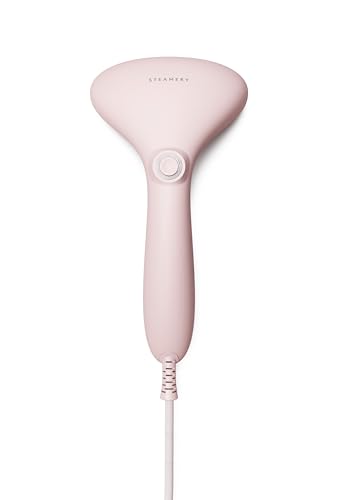What I wish I knew before buying a clothes steamer – don't make the same mistakes I made
Choosing the right clothes steamer can be a game-changer

- 1. Steam production and power make all the difference
- 2. The water tank capacity you need depends on usage
- 3. Don't overlook safety and ease of use
- 4. Extra features and accessories come in pretty handy
- 5. Handheld vs upright
- 6. Maintenance and cleaning
- 7. Price and budget
- Our top-rated clothes steamers

I've admitted it before, I have a love-hate relationship with ironing. So, when I finally got my hands on a clothes steamer, I felt like I’d found the ultimate shortcut to smooth fabrics and easy wardrobe care with no ironing board in sight. However, while a clothes steamer can be an absolute lifesaver, there are a few little quirks worth knowing about before you click 'buy now.'
And while clothes steamers are fantastic for a quick freshen-up, sometimes only the best steam irons can tackle those stubborn creases in thicker fabrics like linen and denim. Saying that, a good clothes steamer that's right for you can be a game changer, especially if you’re short on time or patience. They’re quick to set up, easier on delicate fabrics, and they don’t take up nearly as much space as some of the best ironing boards.
From knowing the difference between handheld and upright steamers to understanding exactly how much steam power you need, there’s plenty to consider if you are thinking of replacing your good old iron and want your clothes to look fresh and crease-free. I just wish I'd known about them sooner.
1. Steam production and power make all the difference
One of the first things I learned is that the amount and consistency of steam make all the difference. My first steamer didn’t have much oomph, and I’d find myself going over the same part of the fabric over and over again, getting more frustrated.
'When it comes to steamers, the amount and consistency of steam is key. A good steamer should produce a steady flow of steam that’s strong enough to smooth out creases quickly,' explains Isabella Forgione, small appliance expert at AO.com.
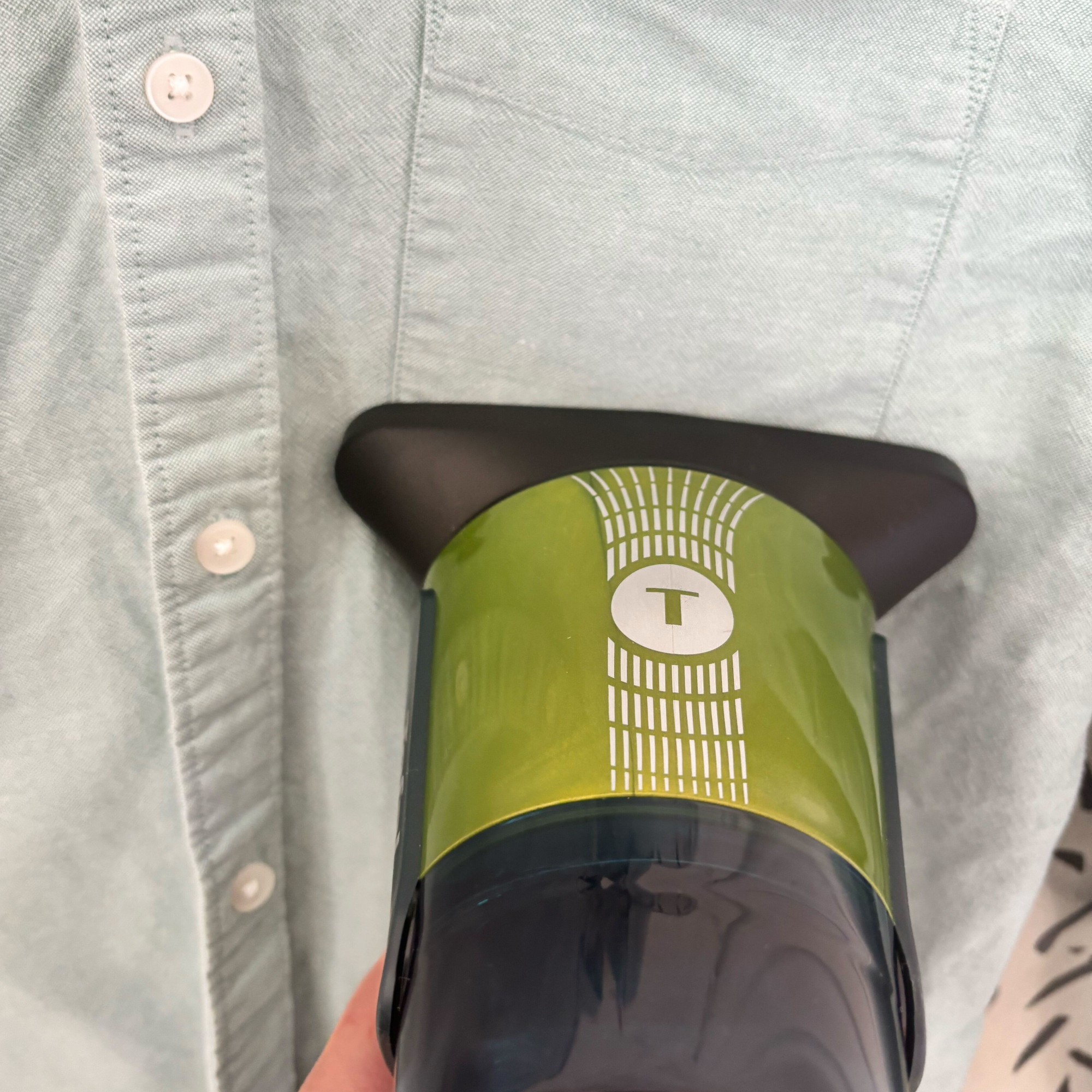
'Look for models with higher wattage (around 1500W or more) as these tend to heat up faster and deliver more powerful steam.'
Next time, I’ll definitely pay more attention to the wattage as it’s absolutely worth the research.
Sign up to our newsletter for style inspiration, real homes, project and garden advice and shopping know-how
2. The water tank capacity you need depends on usage
So, I naively thought a bigger tank was always better because fewer trips to the tap to fill it up time and time again, so I went for the largest one I could find, but as Isabella wisely points out, 'Water tank size can make a big difference, especially if you’re steaming multiple garments in one go.'
'A larger tank means fewer refills, but it can also make the unit heavier. For handheld models, a 200–300ml tank is usually enough for quick touch-ups, while upright steamers often come with 1L+ tanks for longer sessions.'
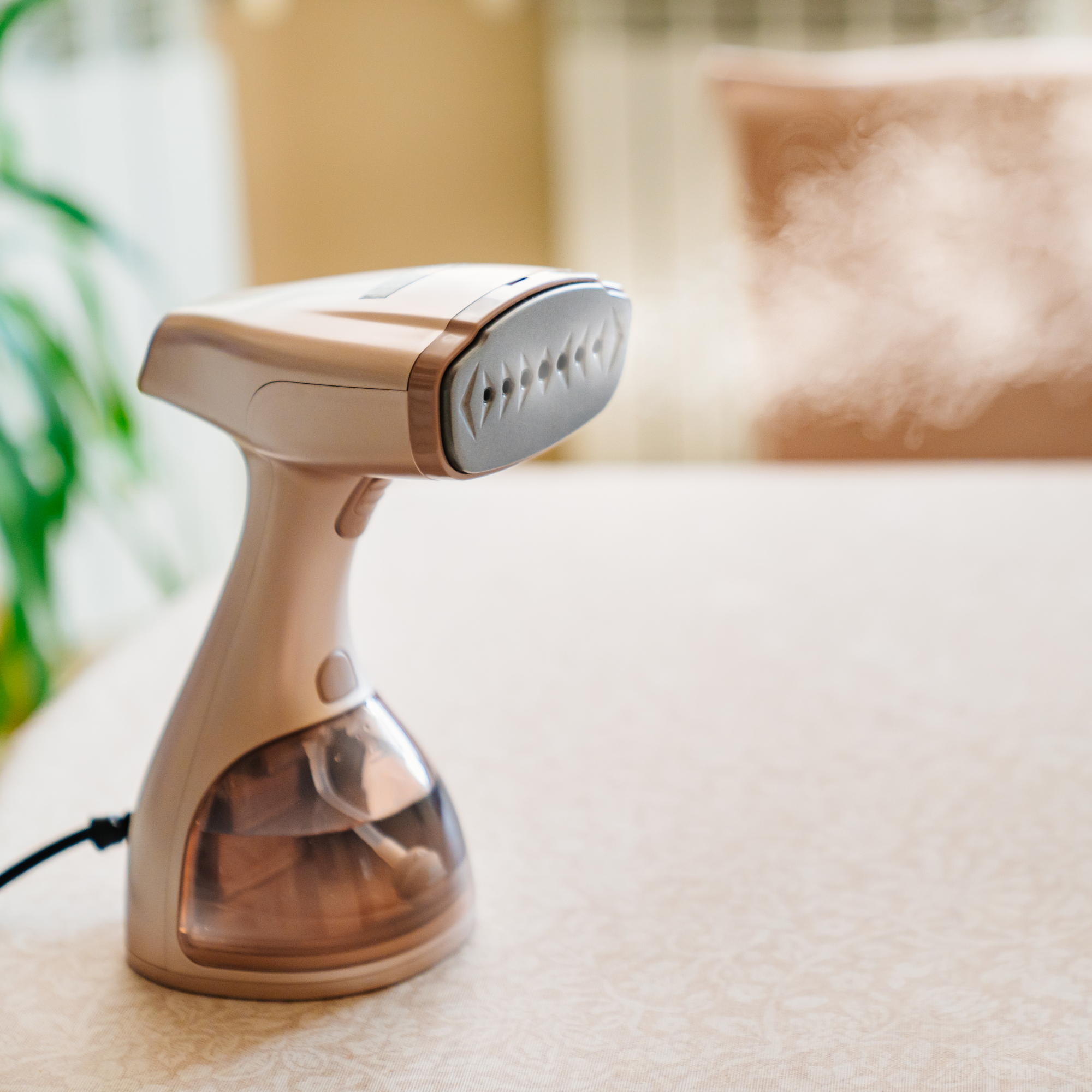
From a number of clothes steamers I've tested, I’ve found that a smaller tank is actually easier to handle for quick fixes, while an upright with a larger tank is a lifesaver when I’m tackling a whole pile of laundry, so they both definitely have their place.
3. Don't overlook safety and ease of use
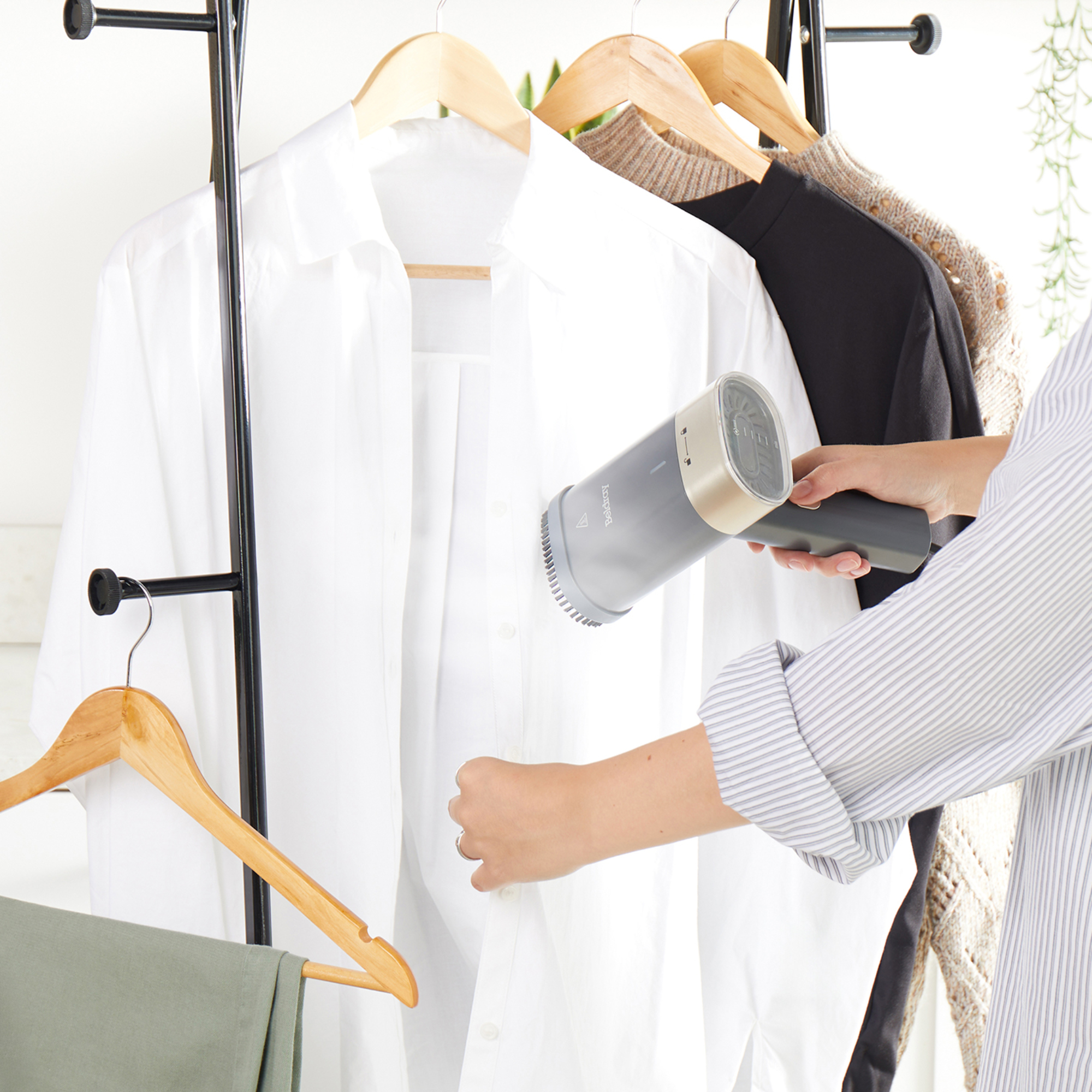
Now I'll be really honest here and say I didn’t even think about safety features when I bought my first clothes steamer, but after a few minor skin singes, I realised they’re quite essential.
'Safety features like automatic shut-off and heat-resistant nozzles are a must, especially if you’re using the steamer regularly. Also, check how comfortable the handle is to hold and whether the controls are easy to reach – it makes a big difference during longer steaming sessions.'
It seems obvious, but a steamer that’s awkward to hold or has fiddly controls can turn a quick job into a real pain.
4. Extra features and accessories come in pretty handy

I didn’t pay much attention to the little extras that come with some steamers. Namely, things like fabric brushes, crease tools and glove protectors. However, some of these add-ons can really make steaming so much easier and more effective to boot, especially for trickier fabrics.
'Some steamers come with handy extras like fabric brushes, crease tools, or glove protectors,' explains Isabella. 'These can really help when steaming thicker fabrics or delicate items. A detachable water tank is also a bonus for easier refilling.'
5. Handheld vs upright
Naively, when I was getting my first steam cleaner, I thought any of them would do the trick, and I was solely going by how versatile they looked, but after doing a little research, it turns out that there's a big difference between handheld and upright models.
For example, my steamer is perfect for last-minute fixes, but an upright model is your go-to for more serious steaming sessions when you're powering through a load of washing.
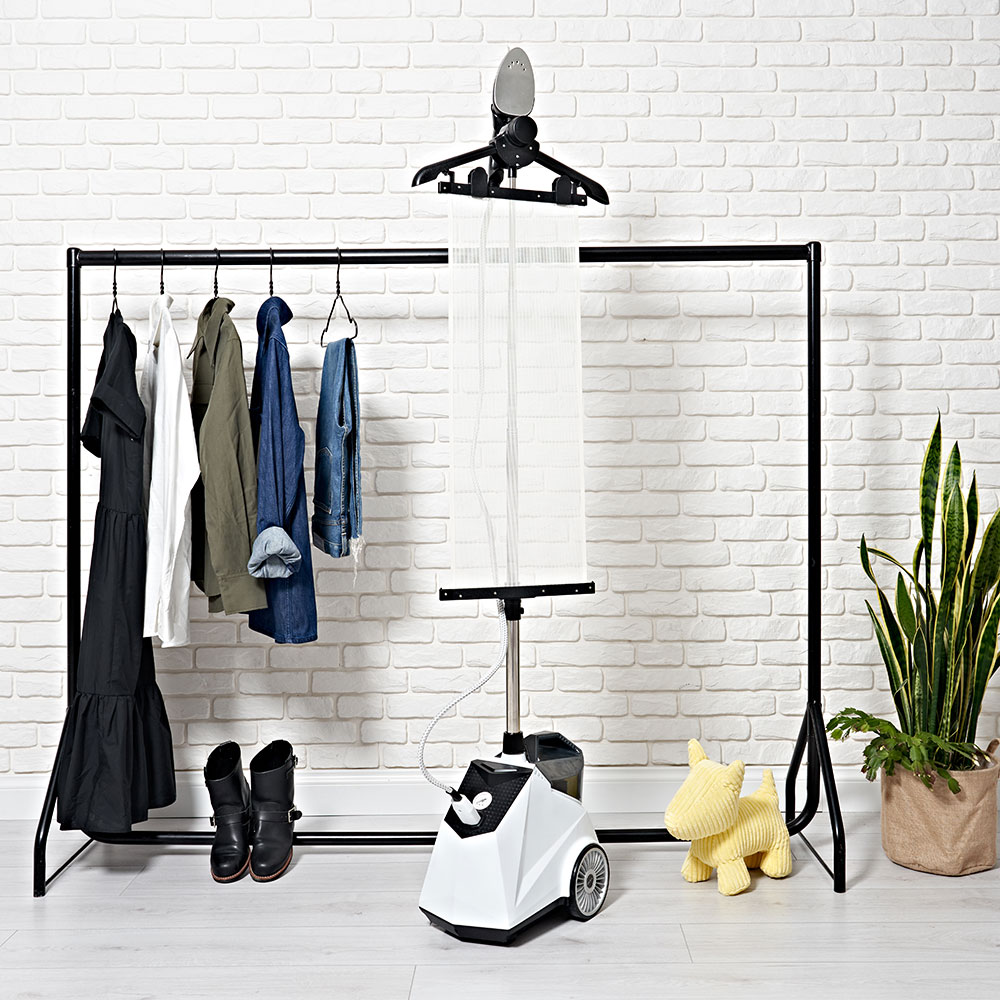
Isabella explains, 'Handheld steamers are great for quick touch-ups and travel, while upright models are better for larger loads or regular use.'
'If you’re short on space, a compact handheld might be the way to go, but for full outfits or heavier fabrics, an upright steamer will give you better results.'
6. Maintenance and cleaning
One thing I didn’t think about at all was maintenance. Luckily, I live in a soft water area, but if you live in a hard water area, it'll probably not come as too much of a shock how quickly limescale can build up, so it's imperative to empty your steamer's tank after every use.
'To keep your steamer working well, it’s important to descale it regularly, especially if you live in a hard water area,' Isabella advises.
'Always empty the tank after use and let it dry out to prevent limescale build-up. Some models even come with self-cleaning functions, which is a nice bonus.'
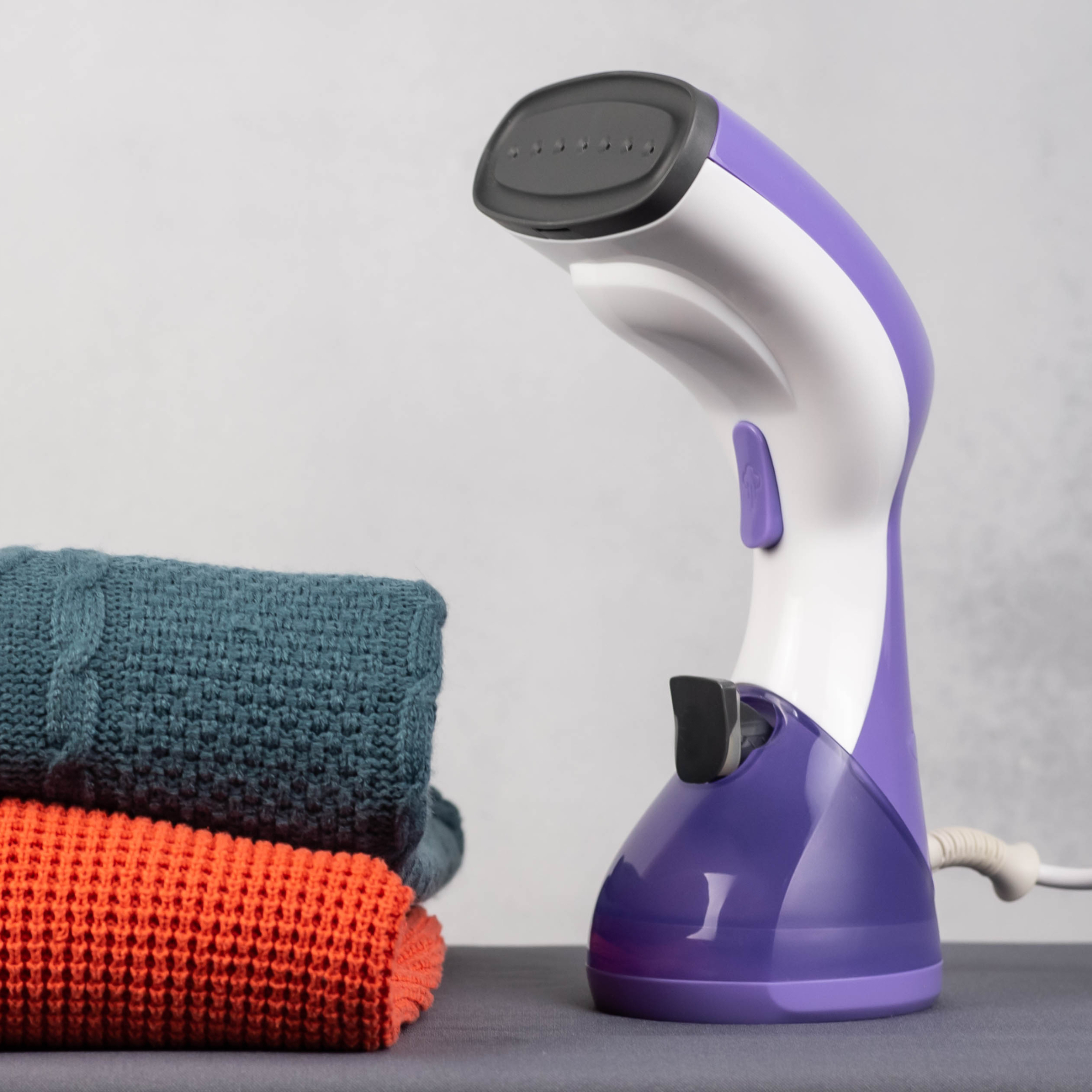
7. Price and budget
Finally, let’s talk money. I always tend to think the more expensive the clothes steamer, the better it'll be, but that's not always the case, as it's more about what you need the clothes steamer to do. It is worth spending a little bit extra for a model that stands the test of time, though, as Isabella says.
'You don’t need to spend a fortune to get a good steamer, but it’s worth investing a little more if you want something reliable and long-lasting,' explains Isabella.
'Think about how often you’ll use it and what features matter most to you, as it’ll help you find the right balance between price and performance.'
Our top-rated clothes steamers

I love this handheld steamer and said as much in my article on the Tefal Aerosteam first look. It heats in 30 seconds, is safe on all ironable fabrics and has a long 2.3m cord, meaning you can use it for curtains, bedding and more.
My trusty iron still earns its keep for those tricky, extra-wrinkled jobs where only a proper iron can really blast those tough creases out.
However, if you’re weighing up whether to invest in a steamer or stick with your iron, I’d say it’s worth having both in your laundry arsenal, once you know exactly what you're looking out for before you buy one.
Let me know if these top tips are helpful in the comments!

Jenny is Senior Digital Editor and joined the team in 2021, working across Ideal Home, Real Homes, Homes & Gardens, Livingetc and Gardeningetc. Since getting on the property ladder, her passion for interior design and gardening has taken on a new lease of life. She loves collecting and salvaging unique items (much to her other half's despair) but sniffing out stylish home bargains is her one true love.

